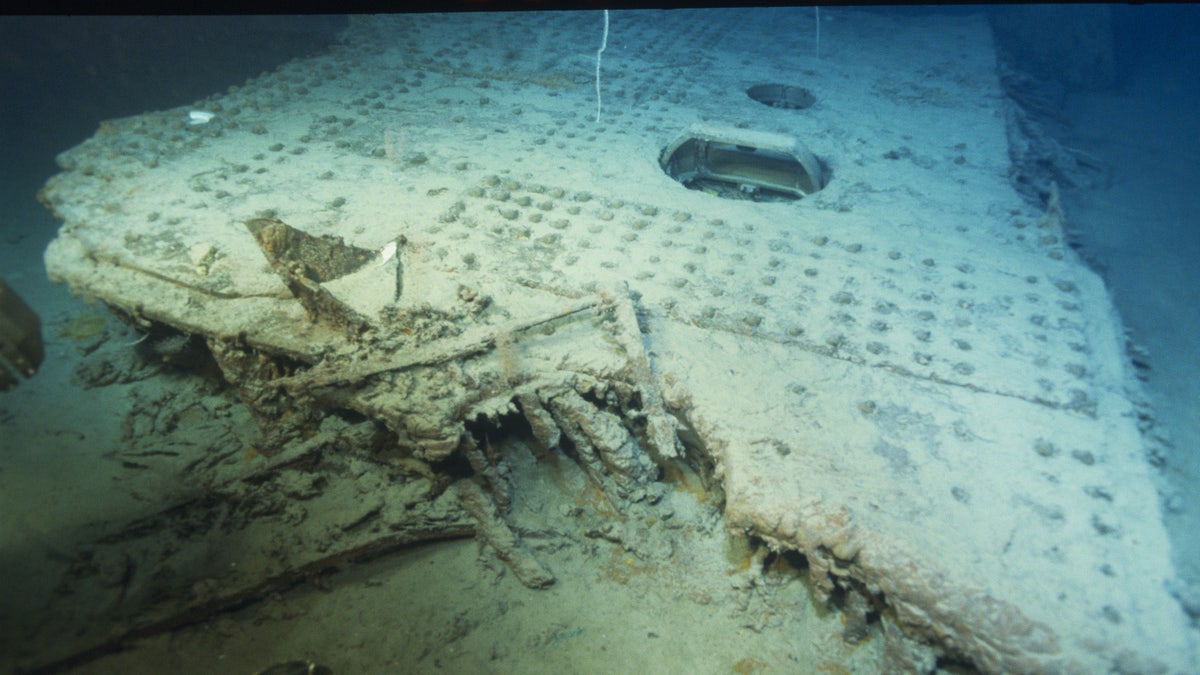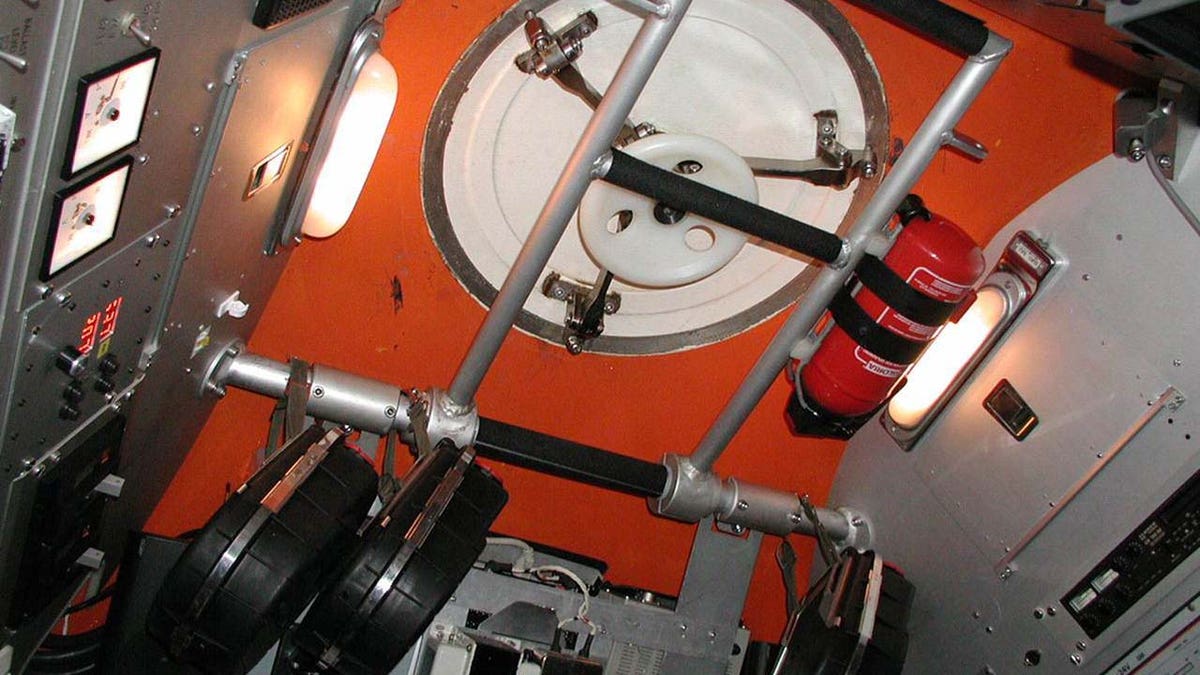Tom Zaller describes his 'powerful' visit to the Titanic's wreckage
The president and CEO of Imagine Exhibitions, Tom Zaller, spoke to Fox News Digital about his journey down to the bottom of the ocean to see the Titanic wreckage some years ago.
As urgent search efforts continue for the submersible that vanished on its way to the wreckage of the Titanic, a tourist exhibit producer who made the trip in a different vessel described it to Fox News Digital on Tuesday as "one of the most powerful experiences of my life."
Tom Zaller, the president and CEO of Imagine Exhibitions and the producer of Titanic: The Exhibition, which opens in Los Angeles on June 30, sat down for a video interview with Fox News Digital and talked about his experience of being "fortunate enough" to visit the Titanic's wreckage, some 2½ miles below the water's surface.
"This [was] 23 years ago," recalled Zaller, who is based in Atlanta, Georgia.
He said the vessel in which he traveled, a Mir submersible, was "a little bit different than the Titan."
SEARCH FOR MISSING TITANIC TOURIST SUB CONTINUES IN RACE AGAINST TIME
Zaller explained, "I've been a producer and creator and participant in Titanic-related exhibitions, in museums and casinos and shopping centers and places all over the world since 1998. And so I'm very familiar with the story [of the Titanic] and how it touches people."

The shipwreck of the RMS Titanic is pictured here in 1996. (Xavier DESMIER/Gamma-Rapho via Getty Images)
His dive happened, he said, "because I was in that industry, related to the objects being used [in the displays] and to tell the stories."
TITANIC EXHIBITION PRODUCER SPOKE WITH CEO OF OCEANGATE BEFORE TOURIST SUB WENT MISSING
So, "I was one of the very, very few people in the world who had the ability to be, you know, within a few meters of the Titanic," he said. "And it was an incredibly profound experience, one that I'll never forget for a lot of reasons."

A Mir submersible, a self-propelled, battery-powered class of deep-submergence vehicles, was used to visit the site of the Titanic wreckage in previous years. Tom Zaller shared this photo with Fox News Digital. (Courtesy Tom Zaller)
Zaller detailed his thoughts and experiences.
"I was fortunate enough to be a passenger and an observer [who's been] working to create exhibitions. But I'm not a submersible pilot. I'm not an expert on maritime anything."
MISSING SUB'S RESCUE UNLIKELY IN FRIGHTENING HUMAN DRAMA: ‘THE MATH IS NOT GREAT’
However, he said, "I know a lot of things about the Titanic. I did take that journey for 12 ½ hours. It usually takes about 2½ hours to get down, then we spent about 8 hours of time on the bottom — and then another two hours to get back up. And — if you've never done it before, which I hadn't ever been that deep in the ocean, like most people haven't — it's an incredibly powerful experience."
Zaller shared stunning details.
"Let's start with just getting there. The wreck of the Titanic is 800 miles due east of Boston. The closest land is 400 miles away, in Newfoundland. So you first get up to St. John's in Newfoundland, which is about as far northeast in North America as you can get."
"I had never gone to that depth. I had never been in a submarine before, besides, you know, at a museum. So it's a little nerve-racking."
Added Zaller, "And then [you] get on a boat, some short of ship that's going to take you — for 36 hours, in my case — to the middle of the North Atlantic, to get out to the site."
Next, he said, he needed to be transported to the base, which was "the larger research vessel. And in my case, there were a total of 26 dives to the wreck on this expedition, across 13 dive days."

Tom Zaller is shown preparing for his trip to the site of the Titanic wreckage via a Mir submersible, a self-propelled, battery-powered class of deep-submergence vehicles, more than 20 years ago. He shared this and other photos with Fox News Digital. (Courtesy Tom Zaller)
Added Zaller of the other vessels working in tandem with the research vessel, "There were two submersibles. And they dive together, which also gives you, maybe as a novice, some feeling of, 'Oh, if [something] happens to me, there's another guy down there who can help me out.'"
He said, "Of course, it's very complicated."
Again, Zaller emphasized, "I had never gone to that depth. I had never been in a submarine before, besides, you know, at a museum. And so, it's a little nerve-racking."
ONE OF PAKISTAN'S RICHEST MEN, SON, ABOARD MISSING OCEANGATE TITANIC TOURIST SUBMARINE
But, "somehow, after watching the sub go down and the sub come up each day — the sub would go down, the sub would come up. And I wasn't even scheduled to dive to the wreck. It was a last-minute opportunity [to be on the Mir] — there was space available, and so I had that chance."
Zaller went on, "You climb up the entrance [into the] top of the submersible. And, as you'd imagine, it's sort of a circular portal-type thing that you have to move your shoulders down as you climb into it — and then be very careful not to hit a variety of different important instruments that I have no idea what they do, as my feet are dangling, climbing down this little ladder, and then you're inside this pressure sphere."
"It's small! It's six feet in diameter. And there are three human beings in there."
So, "it's two meters in diameter, right? Three people. Pilot's in the middle; the photographer and observer is on one side; and then my space is on the other side. There are three portholes. Porthole one is in the middle for the pilot, and then one on this side and one on [the other] side."

A Mir submersible, a self-propelled, battery-powered class of deep-submergence vehicles, that was used to visit the site of the Titanic wreckage in previous years. (Courtesy Tom Zaller)
Said Zaller, "On the inside, the porthole's about six inches in diameter. And then the outside, it's about 12 inches in diameter. And it's concave when it's out on the surface. But the pressure is so incredibly strong, it's flattened out when it's down at that depth."
And, then he noted, "It's time to close the hatch."
He noted of being inside the submersible, "Imagine … You're in it. It's small! It's six feet in diameter. And there are three human beings in there."
He said his trip took place in August — "There's no air conditioning. And it was a hot day … It gets warm. Me, I wasn't feeling anything. I was euphoric, sitting inside this thing."
"It's just dark outside. It's complete darkness."
So "you get picked up by this mechanical arm that it's kind of hard to imagine. But James Cameron [director of the film ‘Titanic’] does an incredible job of sharing the excitement of the moment. Right? You're out in the middle of the North Atlantic, with a 360-degree horizon. You've got this 500 foot research vessel, and then you've got this smaller vessel, sort of the support team."
He said, "You hit the water … you know what's going on, because you've seen it for the last few days … You sort of wave goodbye."
Think of it, he said.
"You're going 2½ miles down to the bottom of the ocean, 12,500 feet to the wreck. So you start the slow descent. And what happens is the water goes from that beautiful Caribbean blue — and it gets darker and darker and darker. And there's not a lot of light."

The interior of the Mir submersible, a self-propelled, battery-powered class of deep-submergence vehicles, that was used to visit the site of the Titanic wreckage in previous years. Zaller shared this photo and others with Fox News Digital. (Courtesy Tom Zaller)
He added, "You try to conserve energy as you would be a classroom. So the lights are out … It's just dark outside. It's complete darkness. And every once in a while they flip on the switches and the pilot will check something and they're reporting back to the ship with this sort of radio communication."
Said Zaller, "And my friend and I like to describe this moment the same way and. You know, you have this descent into dark and total darkness. And for me, I'm nervous [now]."
He added, "It was this idea, that moment — you know, when you're in the theater and the lights come on, and you're waiting for what's about to happen. The anticipation. Imagine 2½ hours of that feeling with nervous energy — and the fact that you're going to, you know, a gravesite."

Tom Zaller described his visit to the Titanic wreckage of years ago in an original interview with Fox News Digital this week. (Fox News Digital)
It's the place where "the Titanic sank more than 100 years ago. It was a very powerful emotional experience for me."
And so "finally … you know what depths you're at and getting closer and closer … In our case, we touched down onto the bottom. And when you touch down, it creates this murky disruption of the ship."
He continued, "The silt and sediment are on the bottom of the ocean. Remember, at that depth, there's no light. There's very little life and there's very little current."

Tom Zaller told Fox News Digital, "When you first touch down [on the ocean's floor, near the wreck of the Titanic], it's like you're in a cloud." (Fox News Digital)
So "what was a depression of, say, a large piece of steel, the structure that might have come off the Titanic — that depression in the Earth is still there. So it's very still a very solemn place. But when you first touch down, it's like you're in a cloud. And so, then they have to do something. Do they get to a buoyancy?"
Somehow, he said, "you come up and you're sitting, and then there are lights on the outside of the submersible, and you start to go forward, and you come through this cloud — and you're there."
"It's upright. It's proud. It's as majestic as the day when she first sailed."
Depending, he added, on "where you land, you might be 500 feet from the Titanic, or you might be right at the barrel of the ship. And it's an incredible experience."
He also said of being at the bottom of the ocean, "It's very cold and it's very dark when you're down at that depth."
Zaller told Fox News Digital, "It was a majestic ship when she left port, but when the Titanic broke … the bow section, which is the longest section, sailed straight down and sort of landed into the seabed. And so she sits upright, proud — like the day she was sailed."
He said, "She's very powerful."
CLICK HERE TO GET THE FOX NEWS APP
He added, "But you also have the fact that she broke apart. There's a stern section that's about a half a mile away, spun around the other 180 degrees with the propellors facing towards the bow section."
But "the way the Titanic sits in seabed — it's upright. It's proud. It's as majestic as the day when she first sailed."
Zaller is an acquaintance of Paul-Henry Nargeolet, a French mariner and Titanic expert who is reportedly among the five people on board the Titan.
CLICK HERE TO SIGN UP FOR OUR LIFESTYLE NEWSLETTER
Zaller described Nargeolet as "probably one of the foremost experts on the Titanic."
Titanic: The Exhibition runs through Sept. 15.


